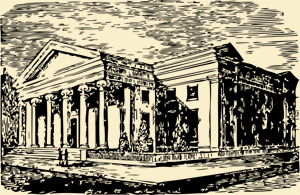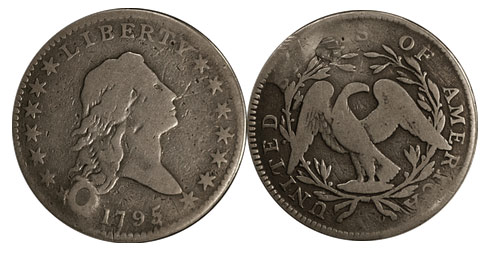The U.S. Mint, which has existed for 228 years, produces circulating coinage, bullion coins, numismatic coins and medals.
 Bullion.Directory precious metals guest post 02 July, 2020
Bullion.Directory precious metals guest post 02 July, 2020
By Nick Adamo
President at Bullion Shark LLC
It is the nation’s sole manufacturer of legal tender coinage and the world’s largest coining facility with branch mints today in Philadelphia, Denver, San Francisco and West Point.
The coinage the U.S. Mint issues is critical to facilitating commerce and the banking system. It is also a source for reducing the national debt (which is how profits are used from the sale of collector coins and from the difference between the face value and cost to make a circulating coin, which is called seigniorage).
In addition, our coinage reflects our shared history and ideals and the legacy of our nation.
Why Was The U.S. Mint Created?
During the colonial period, foreign currency and colonial currency was used.
After the American Revolution, the U.S. was governed by the Articles of Confederation under which individual states were authorized to issue their own coins, which led to monetary chaos since the same coin was worth different amounts in different states.
After the Constitution was passed in 1788, discussion began about the need for a mint and a banking system centralized under the new federal government.
When Was The U.S. Mint Established And By Who?
After Alexander Hamilton was appointed the first Secretary of the Treasury in 1789, he prepared a paper called “On the Establishment of a Mint” that was sent to the House of Representatives and was eventually developed into the Coinage Act of 1792 that was passed by Congress on April 2 of that year.
 That law established the United States Mint in the capital of the time in Philadelphia, Pennsylvania and a national currency called the dollar that would be divided decimally into 100 cents.
That law established the United States Mint in the capital of the time in Philadelphia, Pennsylvania and a national currency called the dollar that would be divided decimally into 100 cents.
There was some discussion of using an image of the president on the coins, which was rejected by President George Washington because the new republic was founded on rule by the people. The Mint Act, as it is also known, said the obverse of each coin had to feature an image emblematic of Liberty and the reverse side an eagle.
The most famous depictions of Liberty on 19th and 20th century coins were those on the Morgan dollar, Peace dollar, Walking Liberty half dollar and the Saint-Gaudens double eagle gold coin.
The last two designs were reprised in 1986 for the American Silver and Gold Eagles.
In 1909, another design tradition began with the debut of the Lincoln cent, the first coin to depict a U.S. president, which continued to the nickel, dime, quarter, half dollar and dollar coins.
First U.S. Coins
Washington appointed scientist David Rittenhouse as the first Director of the Mint, and Rittenhouse purchased two lots at 7th and Arch Streets in Philadelphia where a three-story Mint building, the first federal building, was erected.

Coin production began right away. On July 13, 1792 the first coin, a silver half disme, was struck using silver from Martha Washington’s silverware. Then in 1793 the first copper coins, which included cents and half cents, were struck
The first silver half dollars and then dollars were issued in 1794 featuring the flowing hair design created by Chief Engraver Robert Scott. And in 1795 the first gold coins were issued, including eagles and half eagles also designed by Scott, which was followed in 1796 by quarter eagles.
How Many Mints Have There Been?
In 1873 the Philadelphia Mint branch of the United States Mint became part of the Department of the Treasury, which is why today its administrative headquarters is in Washington, DC.
The Philadelphia Mint had to move into larger facilities several times until 1969, when it began operations in the large facility where it remains today.
This mint is critical to producing circulating coins and has the ability to produce a million coins in 30 seconds. It also produces numismatic coins, commemorative coins and medals, and it is where the Mint’s team of medallic artists and sculptors work to create the designs that appear on our coins.
Historic mints
As the American nation expanded westward and the population increased, the Philadelphia Mint could barely keep up with the rising demand for coinage.
In 1835, three new southern branches were established in New Orleans, Louisiana, Charlotte, North Carolina and Dahlonega, Georgia.
New Orleans struck silver and gold coins from 1838 until 1861 and from 1879 to 1909, while Charlotte and Dahlonega only made gold coins from 1838 to 1861, when Confederate forces took over all three mints until 1862 when the Union recaptured them, but coins were no longer made at either facility.
San Francisco
The California gold rush that began in 1849 resulted in many people heading west hoping to strike it rich. Since the Philadelphia Mint was too far away to send gold there and have in made into coins, another branch mint was opened in 1854 in San Francisco.
Denver
Then the rush for gold reached Colorado by 1858, which led to creation of the city of Denver. In 1862 Congress approved a branch mint there, and the next year opened an assay office there where gold miners could bring their gold to be melted, assayed and cast into bars.
In 1895 the facility was converted into a mint, and in 1906 the first silver and gold coins were issued there, which were Barber dimes, quarters and half dollars as well as Liberty gold coins (half eagles, eagles and double eagles).
Carson City
In 1859 the famous Comstock Lode began in Nevada, the largest discovery of silver in the U.S., which led the congress to authorize another new branch mint in Carson City that opened in 1870.
By 1893 Comstock’s ore minting had declined substantially, ending minting operations in Carson City, but it continued until 1933 as an assay office. Coins struck with the “CC” mintmark are very popular with collectors, especially the silver dollars.
Fort Knox and West Point
With the growing demand for silver and gold needed for coinage in the 20th century, a secure facility was needed to store all that bullion, leading in 1936 to the opening of the Fort Knox Depository in Kentucky to store the nation’s gold.
In 1938 the West Point Bullion Depository opened in New York state to store silver bullion, and from 1973 to 1986 it made pennies to alleviate the production at other mints.
Since 1988 West Point has had official status as a mint and produces silver and gold bullion and collector coins. It is also the second largest gold depository after Fort Knox.
Today the United States Mint issues the largest variety of coins it has ever produced in terms of different coin programs as well as different metals, striking coins in zinc, copper-nickel, silver, gold, platinum and palladium.












 Material provided on the Bullion.Directory website is strictly for informational purposes only. The content is developed from sources believed to be providing accurate information. No information on this website is intended as investment, tax or legal advice and must not be relied upon as such. Please consult legal or tax professionals for specific information regarding your individual situation. Precious metals carry risk and investors requiring advice should always consult a properly qualified advisor. Bullion.Directory, it's staff or affiliates do not accept any liability for loss, damages, or loss of profit resulting from readers investment decisions.
Material provided on the Bullion.Directory website is strictly for informational purposes only. The content is developed from sources believed to be providing accurate information. No information on this website is intended as investment, tax or legal advice and must not be relied upon as such. Please consult legal or tax professionals for specific information regarding your individual situation. Precious metals carry risk and investors requiring advice should always consult a properly qualified advisor. Bullion.Directory, it's staff or affiliates do not accept any liability for loss, damages, or loss of profit resulting from readers investment decisions.

Leave a Reply